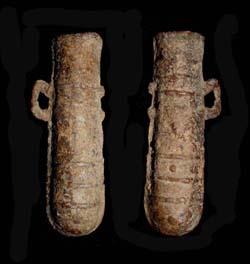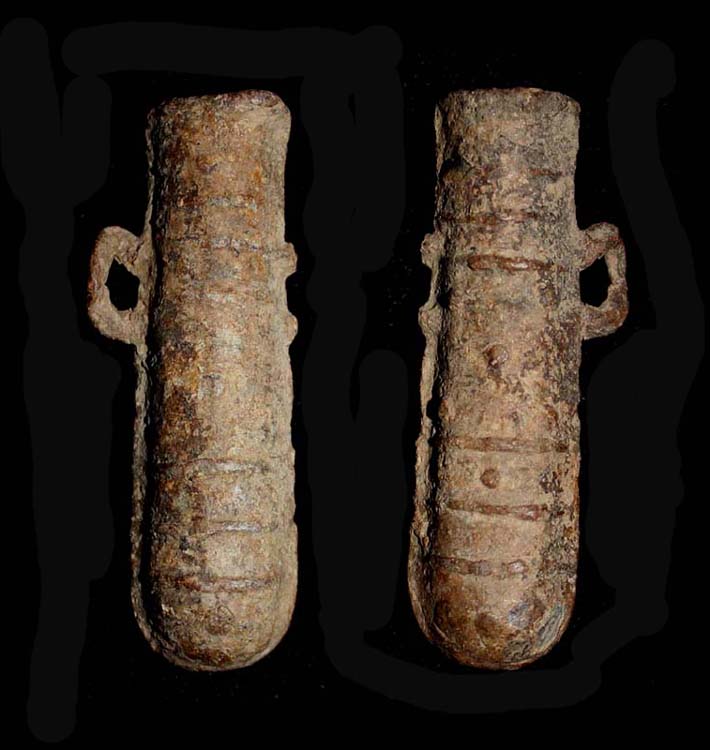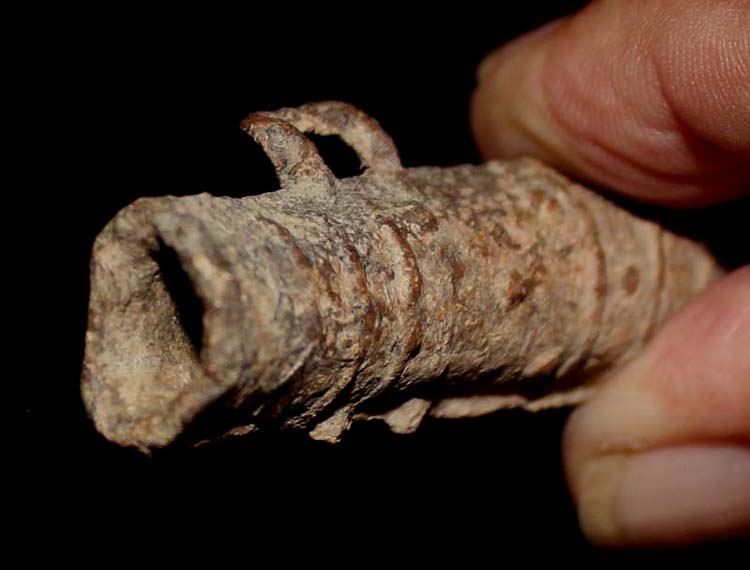


Ave!
Miniature Amphora, Lead, ca. 1st Cent, Rare!
Lead; 58mm/50.9gm
Con/ Missing one handle, otherwise, about As Cast; choice orange brown patina
Description/ Hollow cast miniature lead amphora with a linear decoration about the body, the interior is 54mm deep and was created in a two-piece mold using a method known as "slush casting" in order to produce such hollow containers
Ref/ Rahmani Type A variety?
Seller's Note/ The particular shape of this miniature lead amphora is actually not published nor described in any reference we can find. But what were such used for?
The evidence of specimens with handles suggests that at least some of these vessels were probably hung directly on a string about the neck, while others without handles may have been tied with a string around the neck above the shoulders of the amphora, or been put into a leather satchel hung around the neck of the wearer.
What did these tiny containers hold? Rahmani suggested that these vessels contained a perfume or a liquid ascribed with medico-magical efficacy (Rahnani 2003:37). This suggestion is based on ancient sources, such as Theophrastus and Pliny, which mention the use of lead vessels for storing perfumes and unguents. However, none mention such miniature vessels. It should be noted that Pliny mentioned that lead has many medical uses and that lead sulfide is the basis for some medical ointments that are stored in lead vessels.
Thus, it is possible that if these vessels were used to hold some kind of medicine that included lead. It is also possible that the users of these vessels even considered the lead container as part of the remedy itself. Anyhow, the very small capacity of these vessels (c. 1–2 cc), and the absence of proper sealing of their opening suggests that they probably did not include liquids but rather some powder or possibly ointment. In any case, if they did include something it was necessary to seal them in some way. Since no metal stopper was found with such vessels it seems that if there was one it was probably made of an organic material that did not survive. Rahmani suggested that they might have been stoppered with cork or with a tiny piece of writ – either papyrus or parchment – wound about the rim (Rahmani 2003: 38)




